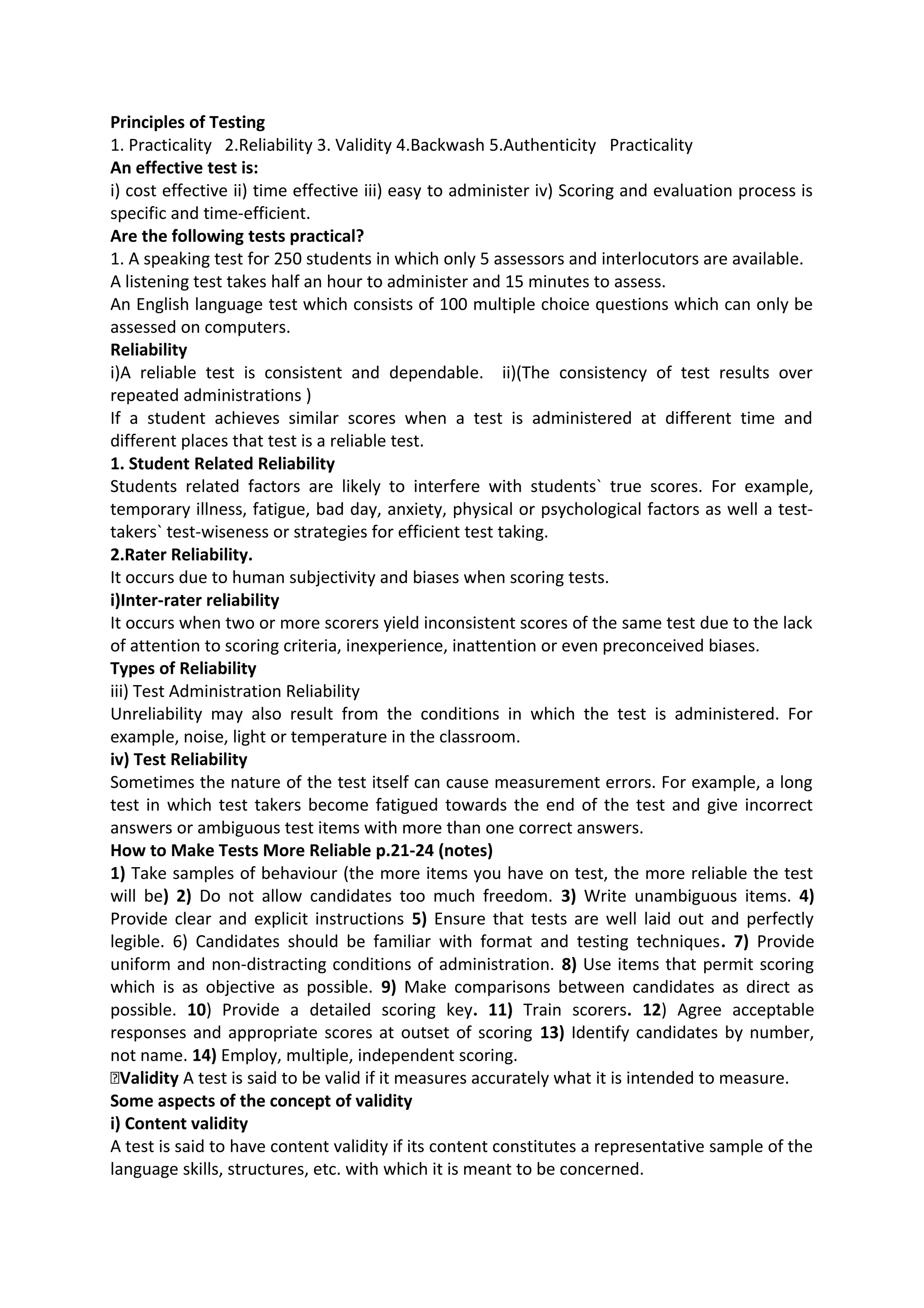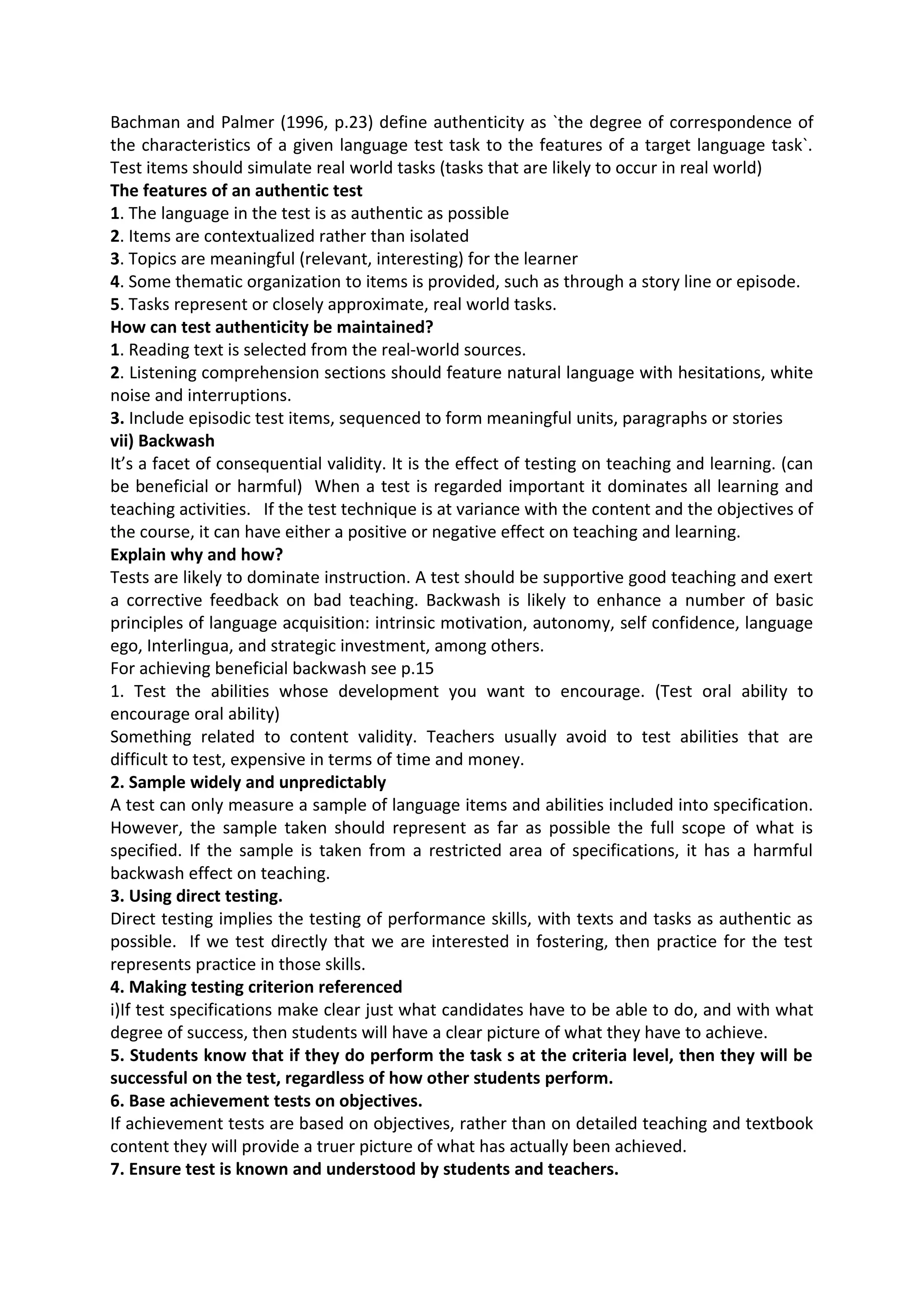The document discusses principles of testing including practicality, reliability, validity, authenticity, and backwash. It provides details on how to ensure tests are practical, reliable, valid, and authentic. Reliability can be impacted by student factors, raters, test administration conditions, and test design. Validity includes content, criterion-related, and construct validity. Authenticity means the test tasks correspond to real-world language tasks. Backwash refers to how a test impacts teaching and learning - a test should support good teaching and provide feedback to improve teaching.






